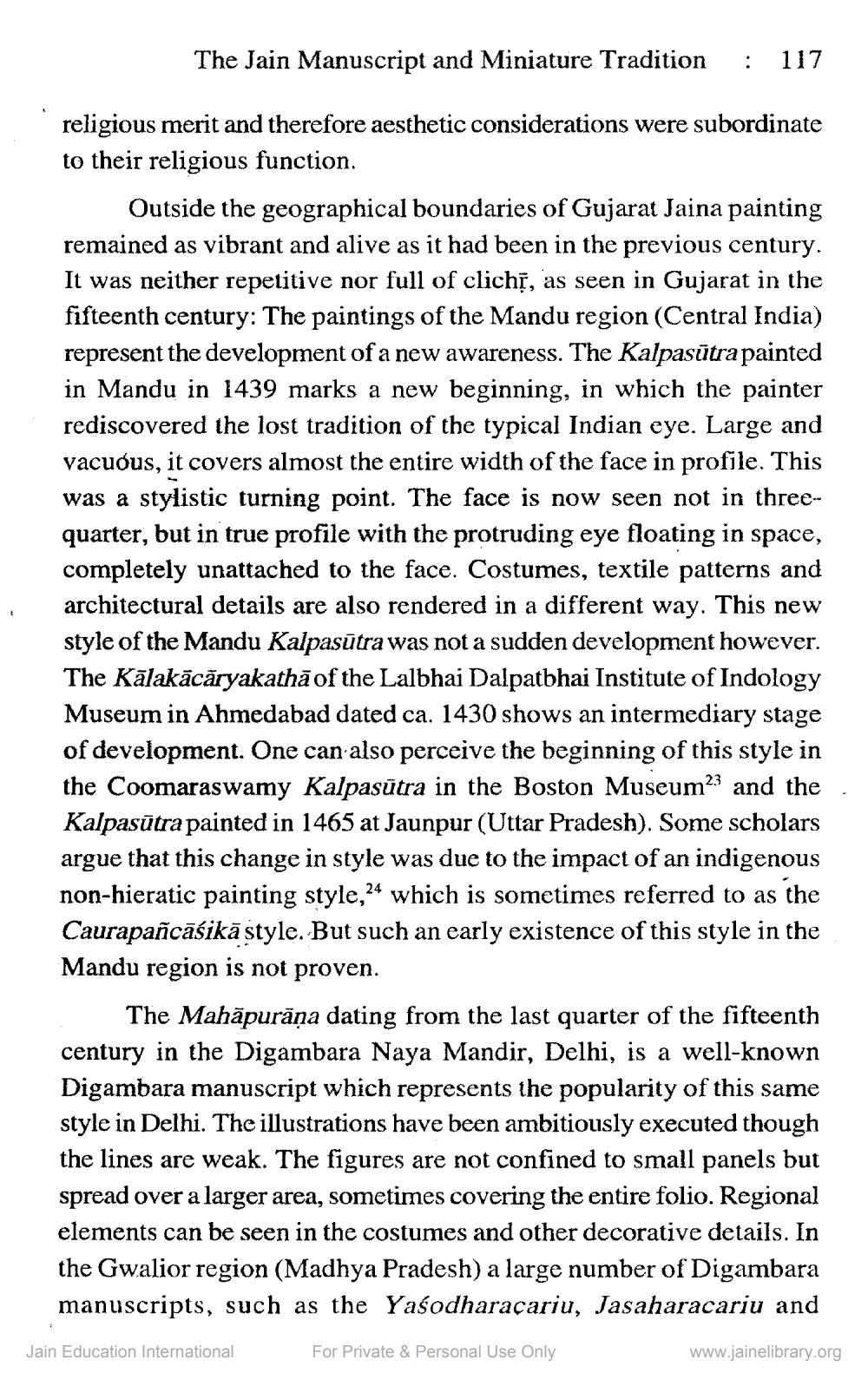________________
The Jain Manuscript and Miniature Tradition
: 117
religious merit and therefore aesthetic considerations were subordinate to their religious function.
Outside the geographical boundaries of Gujarat Jaina painting remained as vibrant and alive as it had been in the previous century. It was neither repetitive nor full of clichs, as seen in Gujarat in the fifteenth century: The paintings of the Mandu region (Central India) represent the development of a new awareness. The Kalpasūtra painted in Mandu in 1439 marks a new beginning, in which the painter rediscovered the lost tradition of the typical Indian eye. Large and vacuous, it covers almost the entire width of the face in profile. This was a stylistic turning point. The face is now seen not in threequarter, but in true profile with the protruding eye floating in space, completely unattached to the face. Costumes, textile patterns and architectural details are also rendered in a different way. This new style of the Mandu Kalpasūtra was not a sudden development however. The Kālakācāryakathā of the Lalbhai Dalpatbhai Institute of Indology Museum in Ahmedabad dated ca. 1430 shows an intermediary stage of development. One can also perceive the beginning of this style in the Coomaraswamy Kalpasūtra in the Boston Museum23 and the Kalpasūtra painted in 1465 at Jaunpur (Uttar Pradesh). Some scholars argue that this change in style was due to the impact of an indigenous non-hieratic painting style, 24 which is sometimes referred to as the Caurapañcāśikā style. But such an early existence of this style in the Mandu region is not proven.
The Mahāpurāņa dating from the last quarter of the fifteenth century in the Digambara Naya Mandir, Delhi, is a well-known Digambara manuscript which represents the popularity of this same style in Delhi. The illustrations have been ambitiously executed though the lines are weak. The figures are not confined to small panels but spread over a larger area, sometimes covering the entire folio. Regional elements can be seen in the costumes and other decorative details. In the Gwalior region (Madhya Pradesh) a large number of Digambara manuscripts, such as the Yasodharaçariu, Jasaharacariu and
Jain Education International
For Private & Personal Use Only
www.jainelibrary.org




